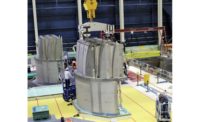Under a law set to take effect on Jan. 1, California employers, including those in construction, must treat contract workers as employees, not independent contractors, unless they meet a three-part standard.
The anti-misclassification measure, intended to add protections for the state’s “gig economy” workforce and signed by Gov. Gavin Newsom (D) on Sept. 18, exempts most industry professional services, but has contractors combing through the statute for applicable language and some "independents" not embracing the changes.
The issue has long challenged the industry and officials in other states.
The California law codifies and clarifies a 2018 State Supreme Court decision in Dynamex Operations West, Inc. v. Superior Court of Los Angeles that said misclassification of workers as independent contractors rather than as employees leaves them at a disadvantage in lost workplace protections.
“AB5 codifies what the court said a year and a half-ago,” says Catherine Fisk, professor of employment and constitutional law at University of California, Berkeley. “Then, the question is how much effort the state or cities are going to put into enforcing the law.”
Adopting the court standard, the new law sets a three-tiered measure—known as the ABC Test—to determine ifr a person providing services can be classed as an employee or independent contractor.
To keep the latter, persons hired must be “free from the control and direction of the hiring entity in connection with the performance of the work, both under the contract for the performance of the work and in fact; outside the usual course of the hiring entity’s business; and customarily engaged in an independently stabled trade, occupation or business of the same nature that involved the work performed,” says the law.
The California Building and Construction Trades Council says the law’s adoption will end misclassified worker exploitation and provide workplace rights, including minimum wage, access to workers’ compensation, unemployment insurance and paid sick leave, while leveling the playing field for contractors competing in a tight market with a limited workforce.
Unions have long pushed to tighten worker misclassification rules.
“The persons who are committing those violations undercut law-abiding business ... on the backs of workers," says Cesar Diaz, council political director, adding that the state will also benefit if the construction industry operates above ground, generating tax revenue that could be used for public projects.
Meanwhile, state trade associates and contractors are struggling to understand the law’s requirements and exemptions.
Not affected, in most cases, are licensed professionals such as architects and engineers, who can continue to operate as independent contractors. But the bill does not exempt surveyors, geologists and truck owner/operators.
“In California, business as usual is not technically the case,” says Peter Tateishi, CEO of the Associated General Contractors (AGC) of California, which represents more than 1,000 contractors. “There are nuances that we need to get ahead of to be compliant as of Jan 1; we are already working with our legal advisor committee to draft advice to assist contractors on how to comply with the law.”
The group supports the legislation but remains concerned about the inclusion of truck owners and operators, with whom general contractors will now have to coordinate directly instead of through third-party brokers.
Tateishi says it is too soon to predict ramifications of the law, but he expects immediate project cost increases as contractors will need to set up in-house coordination of truck owner/operators.
The law effectively cuts trade brokers out of the process, which will affect Western States Trucking Association members, 50% of whom are one-truck owner/operators, says Joe Rajkovacz, director of the group's government affairs. Business owners and contractors could also be affected if they are not able to keep a standby stable of reliable owner/operators.
He sees other unknowns in implementing the law and gauging impacts. “None of us in the trucking industry were at the table, and that’s a fact,” says Rajkovacz. “The current model exists because the broker is flexible to work with many entities to keep owners and operators fully employed. Contractors don’t always have work for owner/operators who are bouncing around public works and private works.”
Others also are sifting through the statute’s technicalities. "Employers don’t need any unnecessary limits and restrictions on their ability to hire workers during this time of a massive skilled and trained workforce shortage,” says Ron Hicks, board chair of an Associated Builders and Contractors Inc. chapter in Livermore, Calif., and vice president of Soltek Pacific Construction Cos. San Diego.. “We need to keep all available avenues open for hiring people and putting them to work."
More federal action on the issue is set to come. In a non-construction case last month, the National Labort Relations Board ruled that a trucking firm did not violate the National Labor Relations Act by misclassifying its workers as independent contractrors, according to an analysis by New York City. attorney Philip Rosen.
The board also is proposing new rulemaking to clarify and set independent contractor use guidelines.






Post a comment to this article
Report Abusive Comment